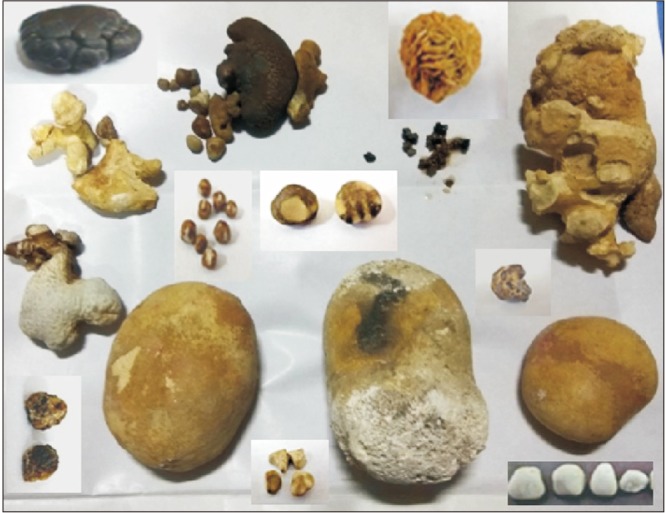Investig Clin Urol.
2018 May;59(3):158-165. 10.4111/icu.2018.59.3.158.
Does quality of drinking water matter in kidney stone disease: A study in West Bengal, India
- Affiliations
-
- 1Department of Zoology, University of Calcutta, Kolkata, West Bengal, India. madhuzoo@yahoo.com
- 2Department of Urology, Institute of Post Graduate Medical Education & Research, Kolkata, West Bengal, India.
- KMID: 2410588
- DOI: http://doi.org/10.4111/icu.2018.59.3.158
Abstract
- PURPOSE
The combined interaction of epidemiology, environmental exposure, dietary habits, and genetic factors causes kidney stone disease (KSD), a common public health problem worldwide. Because a high water intake (>3 L daily) is widely recommended by physicians to prevent KSD, the present study evaluated whether the quantity of water that people consume daily is associated with KSD and whether the quality of drinking water has any effect on disease prevalence.
MATERIALS AND METHODS
Information regarding residential address, daily volume of water consumption, and source of drinking water was collected from 1,266 patients with kidney stones in West Bengal, India. Drinking water was collected by use of proper methods from case (high stone prevalence) and control (zero stone prevalence) areas thrice yearly. Water samples were analyzed for pH, alkalinity, hardness, total dissolved solutes, electrical conductivity, and salinity. Average values of the studied parameters were compared to determine if there were any statistically significant differences between the case and control areas.
RESULTS
We observed that as many as 53.6% of the patients consumed < 3 L of water daily. Analysis of drinking water samples from case and control areas, however, did not show any statistically significant alterations in the studied parameters. All water samples were found to be suitable for consumption.
CONCLUSIONS
It is not the quality of water, rather the quantity of water consumed that matters most in the occurrence of KSD.
Keyword
MeSH Terms
Figure
Reference
-
1. Mandel N. Mechanism of stone formation. Semin Nephrol. 1996; 16:364–374. PMID: 8890393.3. Robertson WG, Peacock M, Baker M, Marshall DH, Pearlman B, Speed R, et al. Studies on the prevalence and epidemiology of urinary stone disease in men in Leeds. Br J Urol. 1983; 55:595–598. PMID: 6228282.
Article4. Hussain M, Lai M, Ali B, Ahmed S, Zafar N, Naqvi A, et al. Management of urinary calculi associated with renal failure. J Pak Med Assoc. 1995; 45:205–208. PMID: 8775489.5. Awasthi M. Counseling of kidney stone patients based on their dietary pattern in the selected areas of District Kangra HP [dissertation]. Palampur: Chaudhary Sarwan Kumar Himachal Pradesh Krishi Vishvavidyalaya;2010.6. Devuyst O, Pirson Y. Genetics of hypercalciuric stone forming diseases. Kidney Int. 2007; 72:1065–1072. PMID: 17687260.
Article7. Biradar AN, Patil SB, Yadawe MS, Kundargi VS. Influence of water quality on urolithiasis. World J Pharm Res. 2014; 3:483–487.8. Pearle MS, Goldfarb DS, Assimos DG, Curhan G, Denu-Ciocca CJ, Matlaga BR, et al. Medical management of kidney stones: AUA guideline. J Urol. 2014; 192:316–324. PMID: 24857648.
Article9. Kleiner SM. Water: an essential but overlooked nutrient. J Am Diet Assoc. 1999; 99:200–206. PMID: 9972188.10. Khan S, Shahnaz M, Jehan N, Rehman S, Shah MT, Din I. Drinking water quality and human health risk in Charsadda district, Pakistan. J Clean Prod. 2013; 60:93–101.
Article11. Borghi L, Meschi T, Schianchi T, Briganti A, Guerra A, Allegri F, et al. Urine volume: stone risk factor and preventive measure. Nephron. 1999; 81(Suppl 1):31–37.
Article12. Mitra P, Guha M, Ghosh S, Mukherjee S, Bankura B, Pal DK, et al. Association of calcitonin receptor gene (CALCR) polymorphism with kidney stone disease in the population of West Bengal, India. Gene. 2017; 622:23–28. PMID: 28435134.13. World Health Organization. Guidelines for drinking-water quality, health criteria and other supporting information. Vol.2:2nd ed. Geneva: World Health Organization;1997.14. World Health Organization. Guidelines for drinking-water quality. 3rd ed. Geneva: World Health Organization;2004.15. Indian Council of Medical Research. Manual of standards of quality for drinking water supplies. Indian Counc Med Res. 1975; Spl.Rep.No.44:27.16. Bureau of India Standard (BIS). Indian standard drinking water-specification. IS-10500. 1st ed. New Delhi: BIS;1991. p. 2–4.17. Kumar M, Puri A. A review of permissible limits of drinking water. Indian J Occup Environ Med. 2012; 16:40–44. PMID: 23112507.
Article18. Garg VK, Suthar S, Singh S, Sheoran A, Garima , Meenakshi , et al. Drinking water quality in villages of southwestern Haryana, India: assessing human health risks associated with hydrochemistry. Environ Geol. 2009; 58:1329–1340.
Article19. Mohsin M, Safdar S, Asghar F, Jamal F. Assessment of drinking water quality and its impact on residents health in Bahawalpur vity. Int J Hum Soc Sci. 2013; 3:114–128.20. Basiri A, Shakhssalim N, Khoshdel AR, Pakmanesh H, Radfar MH. Drinking water composition and incidence of urinary calculus: introducing a new index. Iran J Kidney Dis. 2011; 5:15–20. PMID: 21189428.21. Kohri K, Kodama M, Ishikawa Y, Katayama Y, Takada M, Katoh Y, et al. Magnesium-to-calcium ratio in tap water, and its relationship to geological features and the incidence of calcium-containing urinary stones. J Urol. 1989; 142:1272–1275. PMID: 2810505.
Article22. Kohri K, Ishikawa Y, Iguchi M, Kurita T, Okada Y, Yoshida O. Relationship between the incidence infection stones and the magnesium-calcium ratio of tap water. Urol Res. 1993; 21:269–272. PMID: 8212415.
Article23. Singh PP, Kiran R. Are we overstressing water quality in urinary stone disease? Int Urol Nephrol. 1993; 25:29–36. PMID: 8514470.
Article
- Full Text Links
- Actions
-
Cited
- CITED
-
- Close
- Share
- Similar articles
-
- Unsafe Disposal of Child Faeces: A Community-based Study in a Rural Block in West Bengal, India
- Pregnancy in a woman with Wilson's disease treated with zinc: A case report
- Laccase Activity and Azo Dye Decolorization Potential of Podoscypha elegans
- Modification of pharmacokinetics of cefotaxime in uranyl nitrate-induced renal damage in black bengal goats
- Chronic kidney disease in Indonesia: evidence from a national health survey


